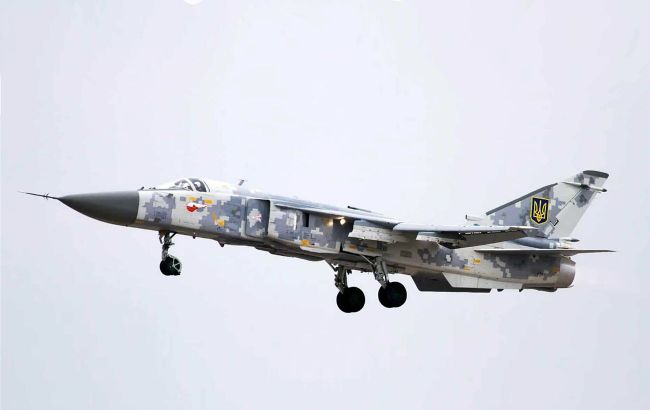Ukraine builds its own guided bomb that reaches 60 km (video)
 Illustrative photo: Ukraine has developed its own analog of guided bombs (ukroboronprom com ua)
Illustrative photo: Ukraine has developed its own analog of guided bombs (ukroboronprom com ua)
Ukraine has begun developing its own version of Russia's guided bombs. The prototype can already hit targets at a range of 60 kilometers, but additional funding is needed to accelerate the project, according to Defense Express.
The Ukrainian design bureau Medoid is working on a domestic analogue of Russia's Universal Gliding and Correction Module (UMPK), commonly known as the KAB. This system converts a conventional aerial bomb into a precision-guided glide bomb and is already undergoing testing. Defense Express shared video footage showing a test drop from a Su-24 frontline bomber during level flight.
Notably, the developers chose not to waste time creating an entirely new design and instead used the exterior layout of the Russian UMPK as a reference. However, the internal components are significantly different, with a focus on achieving higher target accuracy.
"The planning and guidance module for the 500 kg bomb is our own design. The developed wings are easily put on the bomb. There are no problems to connect. It takes only a few minutes. Domestic enterprises are involved in the production. The navigation module is locally developed, but now we have decided to test a new development of one of the leading French companies to ensure maximum resilience against electronic warfare (EW) systems. Still, there are some components we are forced to import from abroad," said Oleh Vostrykh, a representative of the Medoid design bureau.
Specifications of the Ukrainian KAB
Currently, the Ukrainian guided aerial bomb (KAB) is already capable of gliding up to 60 kilometers and precisely striking designated targets. According to the developers, these specifications meet the requirements set by the military in coordination with the Ministry of Defense.
At the same time, work is already underway to improve the system to increase the strike range to 80 km. Formally, if dropped from an altitude of 10 km, the distance could reach up to 100 km, but the actual combat radius will depend on the specific tactics of deployment.
"We're currently at the testing stage. Test drops were conducted from a Su-24 during level flight. The results were positive, particularly regarding the range, drop system, and the bomb’s gliding performance. We still need to conduct up to ten more test drops, which will undergo review by the Ministry of Defense before they approve the product. But for now, the main obstacle to moving quickly is funding," said Vostrykh.
According to him, the design bureau is currently seeking any opportunity to fund the project, as the cost of a single unit is roughly 1,200,000 hryvnias, or about 25,000 US dollars.
"In fact, right now, the funding issue is perhaps the main limiting factor preventing the completion of work on this version of the project and the launch of serial production of the domestic Ukrainian KAB," representatives of the design bureau stated.
It is worth noting that the Ukrainian military's need for long-range aerial bombs remains extremely high - at least 100 units per day. Western models, such as the JDAM-ER, AASM Hammer, and GBU-39/B SDB, currently cannot fully meet this demand. That's why the development of a Ukrainian-made alternative is critically important.
Moreover, even at the testing stage, the cost of the Ukrainian bomb is already lower than that of its Western counterparts, making it even more attractive for mass production.
Ukrainian President Volodymyr Zelensky recently stated that Ukraine's defense production potential exceeds $35 billion, but about 40% of that capacity lacks the necessary funding.
Ukraine's Ministry of Finance is preparing a comprehensive proposal to amend the state budget law, which includes increased defense spending, including funding for weapons production.

